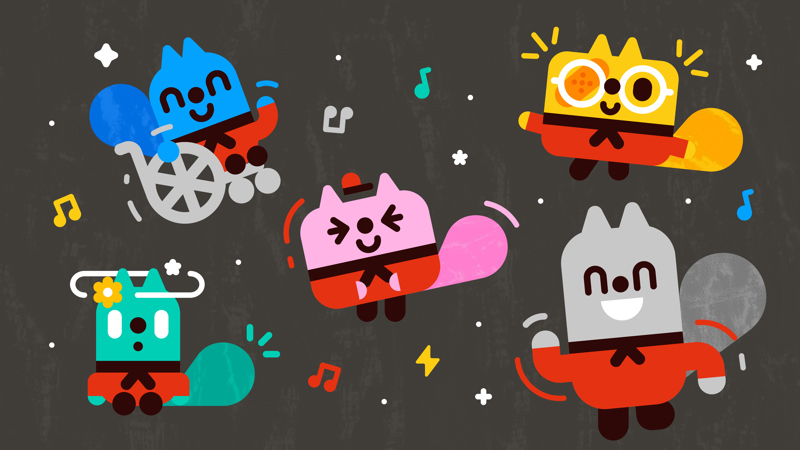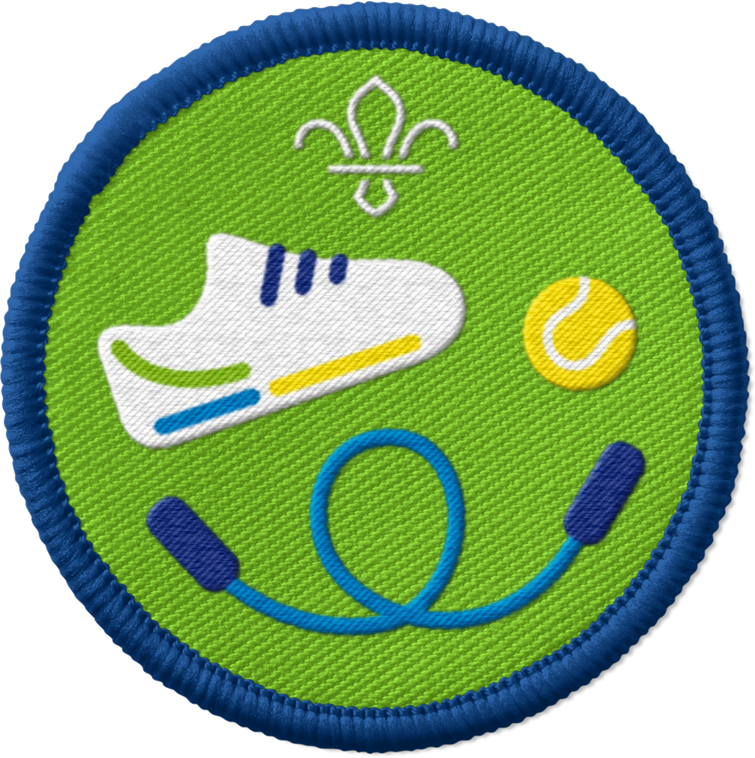
Make some dancing ribbons
You’ll need
- Coloured pens or pencils
- Device to play music
- Device to show photos, videos, or slides
- Double sided sticky tape
- Paper plates
- Scrap paper
- Glue sticks
- Ribbons
Before you begin
- Watch the video clip The evolution of music or find another video or audio file that would be even better and decide which one will work best with your group.
- Make sure you’ve got what you need to play the music during the session. It’s worth testing it out in advance so you know it works.
Story time
- Everyone should sit in a circle.
- Someone should read Sammy's Dancing by Abiee Harris.
- After reading the story, everyone should take some time to reflect on it as a group. We’ve included some questions to help you reflect in the pink box below.
All Sammy wanted to do was dance. Sammy danced at school, on the way home, and all evening until it was bedtime. At night, Sammy even dreamed of dancing among the stars.
The thing is, though, Sammy always danced in the same way. He heard the music and started to tap his toes and wiggle his hips. He would spread his arms out to the sides and a big grin would appear across his face.
One day, Sammy and Jo walked a different way home from school. Far off in the distance there were some sounds. It was music, but it wasn’t like anything Sammy had heard before. Normally when music started to play, Sammy couldn’t help but tap his toes and wiggle his hips and move his arms. But this music was different. Sammy didn’t know how to dance to this.
As they got closer, the music got louder and Sammy saw where it was coming from. He ran over to the window of a hall and peered in. There were lots of children all moving to the music with ribbons in their hands. The movements were big and quick and the ribbons made beautiful shapes in the air.
‘What are they doing?” Sammy asked.
Jo replied: “It looks like they’re dancing. Chinese New Year is coming up and sometimes there is a special type of dance people do to celebrate. It’s called Chinese ribbon dancing.”
“Can I try it?” Sammy was eager to know. Jo reminded Sammy that they had some ribbons at home and suggested they give it a go before tea.
It wasn’t long before Sammy was going along to all different kinds of dancing lessons, and learning to dance to music from all over the world. He still liked to tap his toes and wiggle his hips and move his arms, but her knew how to dance in other ways as well.
Now when Sammy walks home from school there is no type of music that can stop him. His love for dancing is unstoppable!
By Abiee Harris
Dancing ribbons
- Everyone should get into small groups and sit together on the floor.
- Give everyone a paper plate and get them to write their name in the middle of it.
- Stick ribbons around the outside of their plate and decorate the middle. If you don’t have any ribbon, you could use scraps of old fabric, tissue paper or coloured paper.
Listen to the beat
- When everyone's made their paper plate, everyone should stand in a big circle.
- Play the music.
- Everyone should pick up their dancing ribbons – when they feel like it, it’s time to dance, dance, dance.
- There are lots of different ways to move your body to the music. Everyone should choose something that feels right for them.
Reflection
This activity encourages children to move their bodies with confidence and have fun. It explores how music and dance link together, as well as showing everyone how moving your body can boost wellbeing. You can reflect throughout the session or at the end.
Sammy's Dancing
- What new dance did Sammy learn?
- What dance moves do you like to do? Can you show us any?
Dancing ribbons
- What do you think is good about moving your body every day?
- How do you feel when you hear music you like?
Listen to the beat
- How did you move differently with different music?
- How did you feel when you danced?
- Do you think dancing every day would be good for wellbeing?
Safety
All activities must be safely managed. You must complete a thorough risk assessment and take appropriate steps to reduce risk. Use the safety checklist to help you plan and risk assess your activity. Always get approval for the activity, and have suitable supervision and an InTouch process.
- Music and films
Make sure music and films are age appropriate for the youngest person present.
- Glue and solvents
Always supervise young people appropriately when they’re using glue and solvent products. Make sure there’s plenty of ventilation. Be aware of any medical conditions that could be affected by glue or solvent use and make adjustments as needed.
- Active games
The game area should be free of hazards. Explain the rules of the game clearly and have a clear way to communicate that the game must stop when needed. Take a look at our guidance on running active games safely.
- You could write the people’s names on the paper plates before you hand them out.
- You could ask everyone to bring the name of a song that they like so you can dance to everyone’s favourite music.
Some people may not feel confident dancing in front of others – they could close their eyes if it makes them feel more comfortable. It’s also OK if they want to stand, listen to the music, and wait and see whether they feel more confident as they see everyone else dance.
All Scout activities should be inclusive and accessible.
People could ask their family or the people they live with what music they like listening to. Could they try out some new dance moves with them at home?
Invite young people to share their thoughts and feelings about dancing and encourage them to chat about how they want to take part in the activity.
